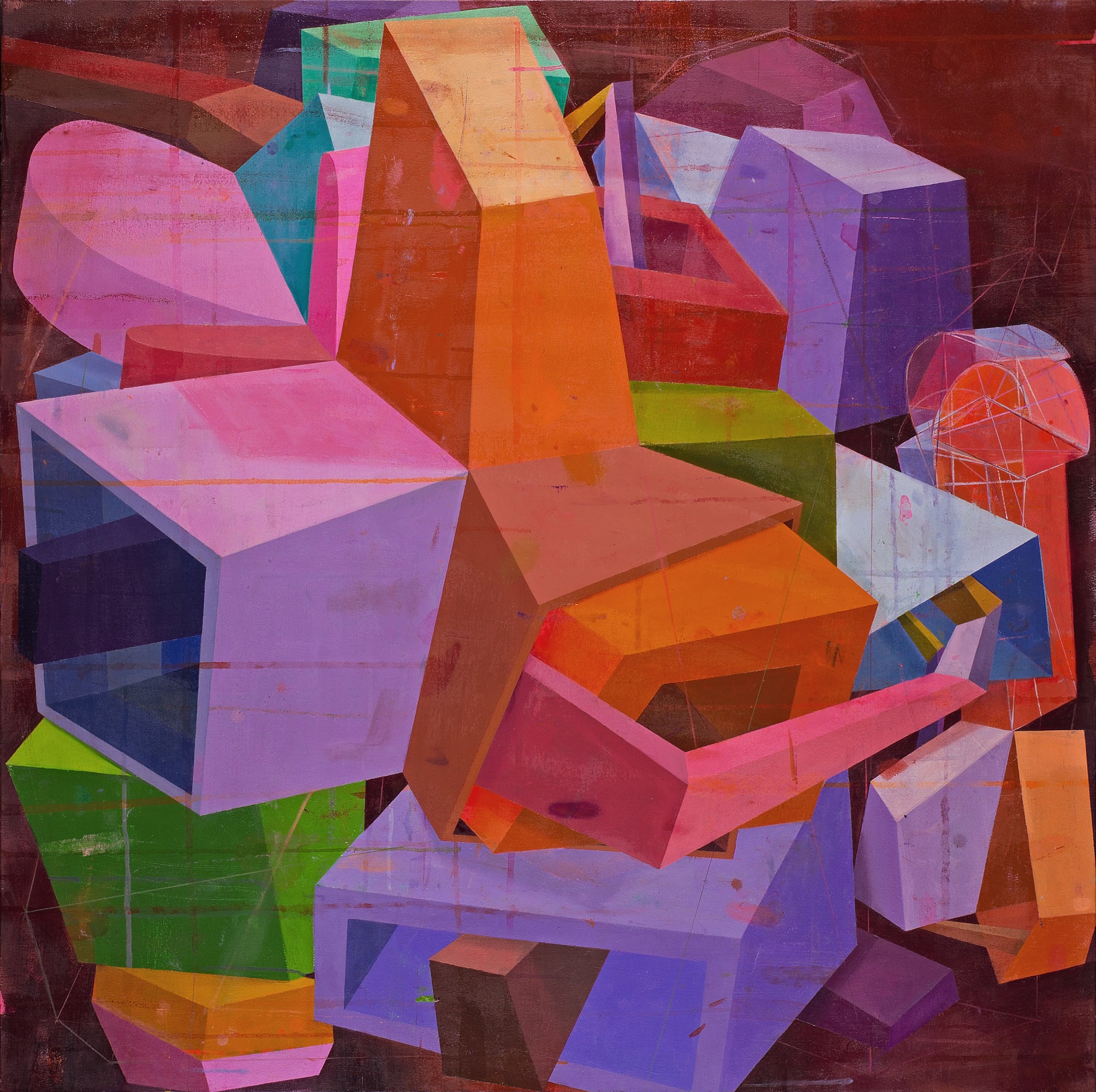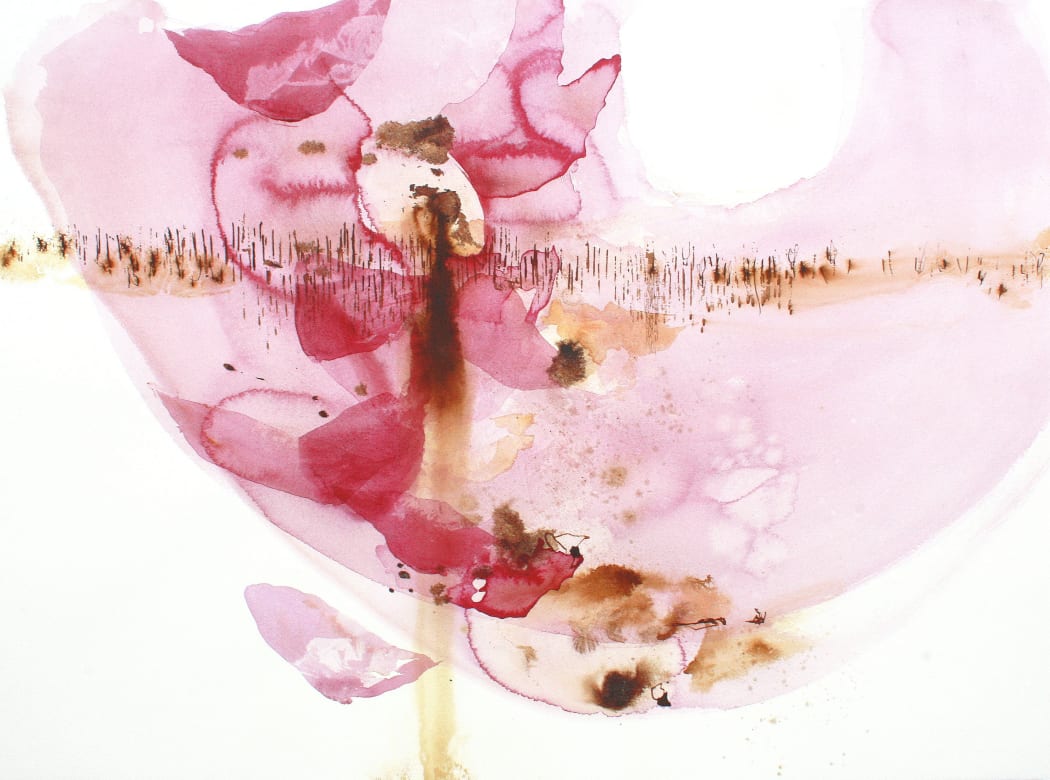
Every week, we'll be sitting down with one of our gallery artists to discuss their work, process, inspiration, and stories. This week we're speaking with Ana Zanic.

BLUSH NEBULA W-2014-6-7
Ana Zanic's work is a meeting of the gestural sponteneity of watercolor and the control of ink drawing. She begins with washes of watercolor, sometimes directing it with brushes, other times letting it drip and flow naturally across the paper. The result is a mapping of her intuitive process itself, which is then punctuated by dynamic lines of ink. The calligraphic marks call to mind something organic, yet intangible. They urge an intimate investigation into their creation and their meaning. We talked with Ana Zanic from her studio in Illinois about her creative upbringing, what she's exploring as she works, and why watercolor is such a perfect fit for her.
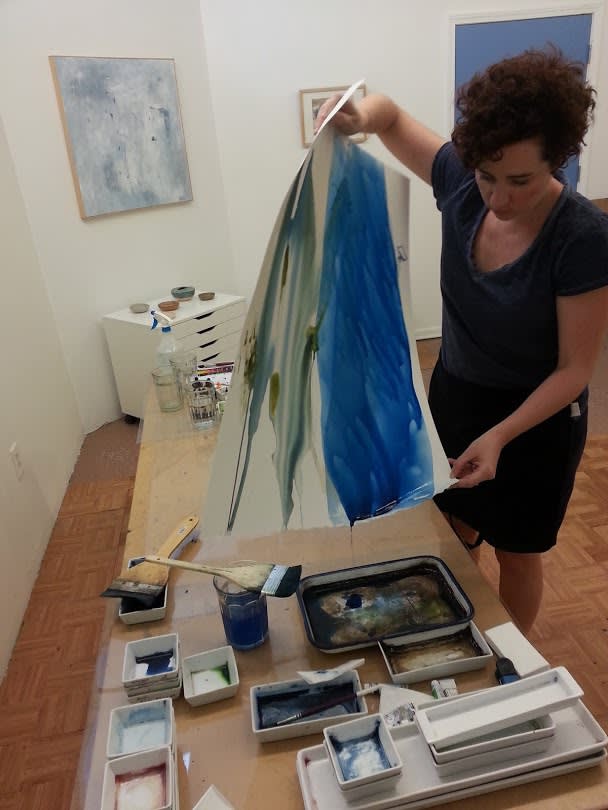
Photo courtesy of the artist
What are your earliest memories related to art?
Apart from always drawing and painting something, my earliest memories related to art are observing many artists in my family and witnessing their working art spaces. The tubes and bottles of colors, the smell of oil paints and turpentine, the fresh damp earthy smell of clay; all of these sensations were often around me as I have over a dozen professional visual artists in the family.
In addition to that, my parents, who are not artists themselves, had a very liberal approach to my upbringing and they encouraged free expression. I actually drew freely over their bedroom wallpaper, and I am grateful for that. Expression came over discipline, always.
Would you say there is any influence of your Croatian upbringing on your work?
I was "transplanted" to the States thirteen years ago, and looking in retrospect I now see just how much growing up in Croatia had an impact on developing a kind of specific visual database, so to speak. Croatia is rich in architecture, from the times when the coast was part of the Roman empire all the way to more recently, when the country was part of the Austro-Hungarian empire. Being surrounded by buildings that were executed with much effort and attention to detail sure made an impact on my way of seeing and observing the world around me. I don't think I would be aware of that if I were still living there, though. I would take it for granted. Also, art education is pretty strong there. Visual art is a mandatory subject in school from the beginning of education all through high school.
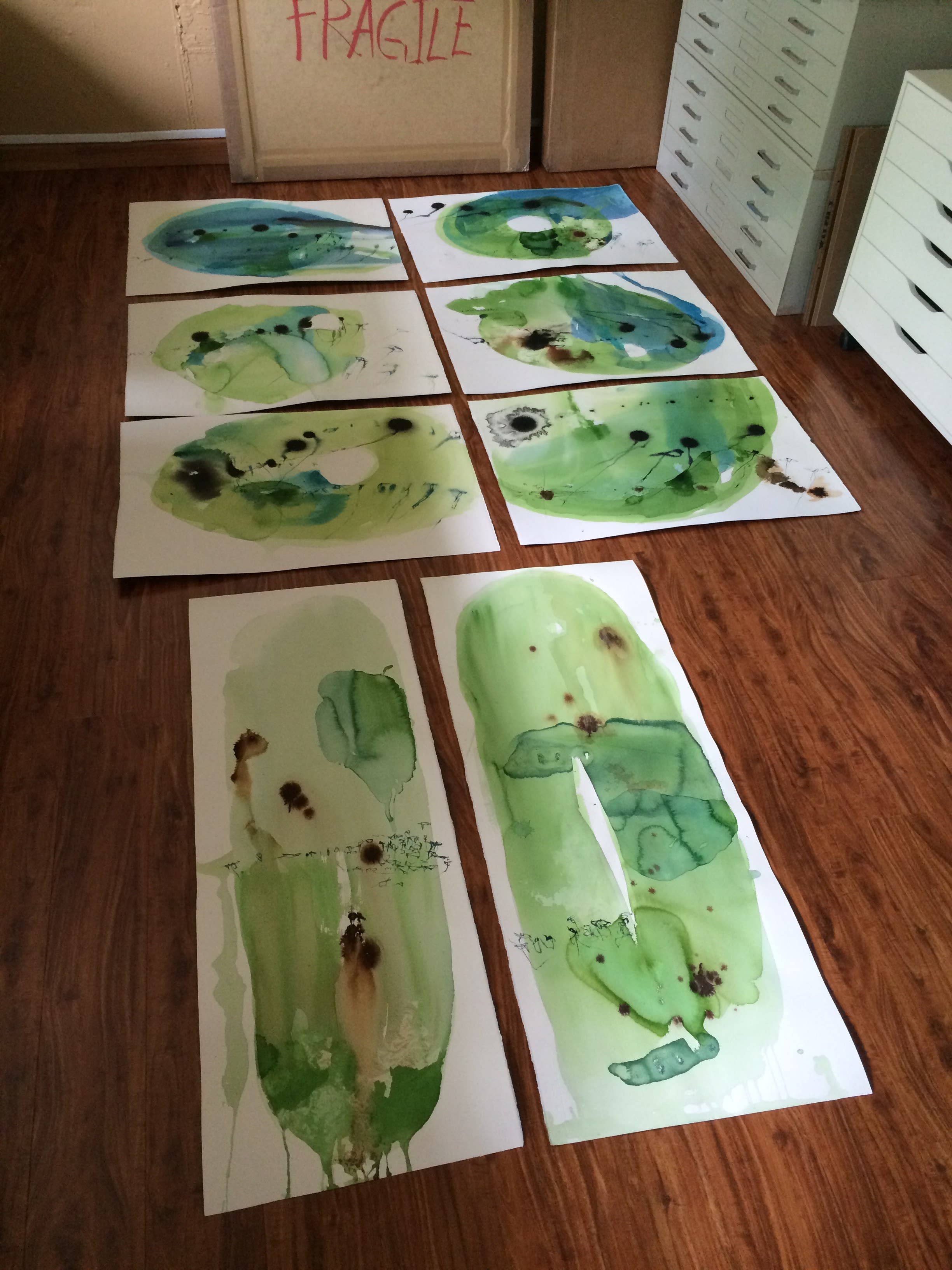
Photo courtesy of the artist
What was the evolution towards your current style like? How did you find your visual vocabulary?
I would say my visual vocabulary developed very organically - it was a mix of just being immersed in the arts from early on, and doing it steadily over a long period of time. In a way it is like handwriting - over time you simply develop your own unique style.
What drew you to working with watercolor?
My dad's aunt and her daughter, Katarina Zanic Michieli and Leila Michieli Vojvoda, who are both amazing artists, had a major influence. When I was preparing for my entrance exam at the Academy of Fine Arts in Zagreb, the two of them were my mentors. Along with doing lots of pencil and charcoal drawings, they opened my eyes to the beauty of watercolor as a very spontaneous and direct technique. They were able to show me how to keep it loose and not overdo it. I think once I "got it" I never wanted to let go of the watercolor medium.
What is your process like?
My process is very spontaneous. I don't do any preparations, and I don't plan things in advance. I also like to work on several pieces simultaneously. Watercolor is a very direct technique, very time-frame specific, so it would take too much time to work on a single piece from beginning to end. I like the flow and movement in my studio production, so going around several works gives it a nice dynamic.
What are the most important elements to you in your work?
Spontaneity is the most important element. Working spontaneously, and having that sense of life somehow translated in the work. Another important element for me is a feeling of intimacy. There always has to be an intimate quality, regardless of scale.

FLOW (W-2016-3-5)
Do you consider the ink marks you make to be a way to bring a sense of control and definition to the work? Or is it a continuation of the spontaneity and intuitive mark making?
For me the mark making is really the most intimate element of the work, and it is definitely a continuation of spontaneity. I feel like I am setting the stage with washes of watercolor, and then the mark making is what breathes life into a piece. The process of mark making is like writing a note; it is very immediate, and there is a sense of vulnerability to it. It almost feels like opening up my journal for the viewer to read.
What are your influences and inspirations?
I feel I had a great fortune to have been surrounded by so many professional visual artists in the family, and many of them influenced my ideas about art in general. As for more historical influences, I would say I was drawn to expressionists, Der Blaue Reiter group in particular. From those artists it would be most notably Kandinsky, and then also Klee. Later on, the abstraction of Mark Rothko, Philip Guston, Joan Mitchell, and Helen Frankenthaler. For the contemporaries, I am a great admirer of Jun-Fei Yi's poignant watercolors, Jay Kelli's small-scale sculpture, and Tony Lattimer's ceramics. When I think about what all these artists have in common, the first thing I think of is a sense of spiritualism and lyricism, and a great interest in the aesthetic. Not all art is intended to be beautiful, but I am usually drawn to the art that is.
In your artist statement, you say you're looking to answer questions of memories, past, and origin. Could you elaborate on that a bit?
I would not say I am looking to answer the questions, but rather to search for the answers. I am actually never interested in the final answer. The definitive and final is never the focus in my work, but rather the process of asking myself what it is all about. Questions of memories, past and origin are all deeply connected with the emotional and subconscious, and I feel my work revolves around that.

Photo courtesy of the artist
You also work with ceramics. What is the relationship like between your ceramics and your painting?
When I work, I always have the specifics of the medium in mind. I like to work with the inherent properties of the medium, not to try to alter and change it. Each medium has its own beauty, and I find working with clay to be immensely natural, even primal. My small-scale ceramic pieces are made almost as a meditative process in which I am adding more and more small vessels to the collection. So far these are all small-scale works, with the mark making playing an important part and creating a sort of bridge between the watercolor and ceramic work.
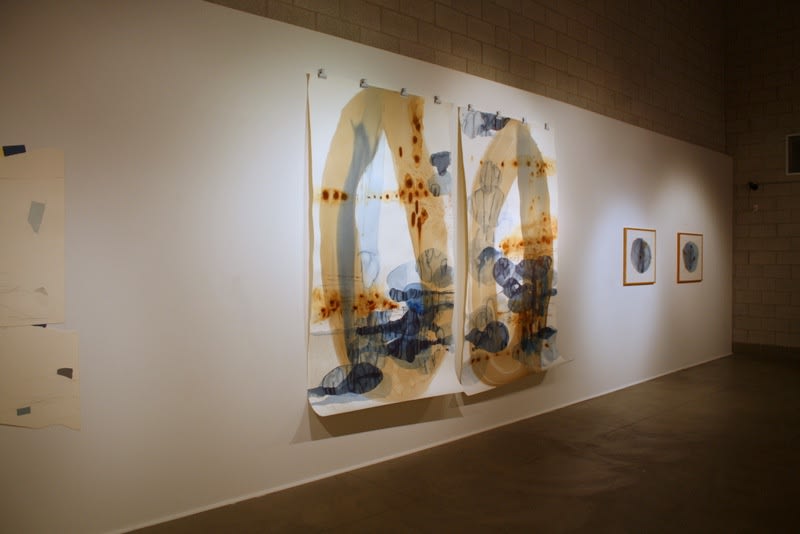
Photo courtesy of the artist
What are you looking to explore next?
A recent large-scale public commission of three 55 x 93 in. watercolors made me work much bigger then usual. As I am interested in the intimate, working big would not be my first impulse. However, I took on this commission with a sense of great excitement and even curiosity, and found the large-scale process to be quite liberating. I loved the physicality and the whole-body movement while working on a huge format. I plan to explore the larger scale watercolor process more.
I also have many ideas for ceramics, printmaking, and even some wooden sculptures, but I am in no rush. I have the rest of my life of making art in front of me, and I like to let things happen naturally.
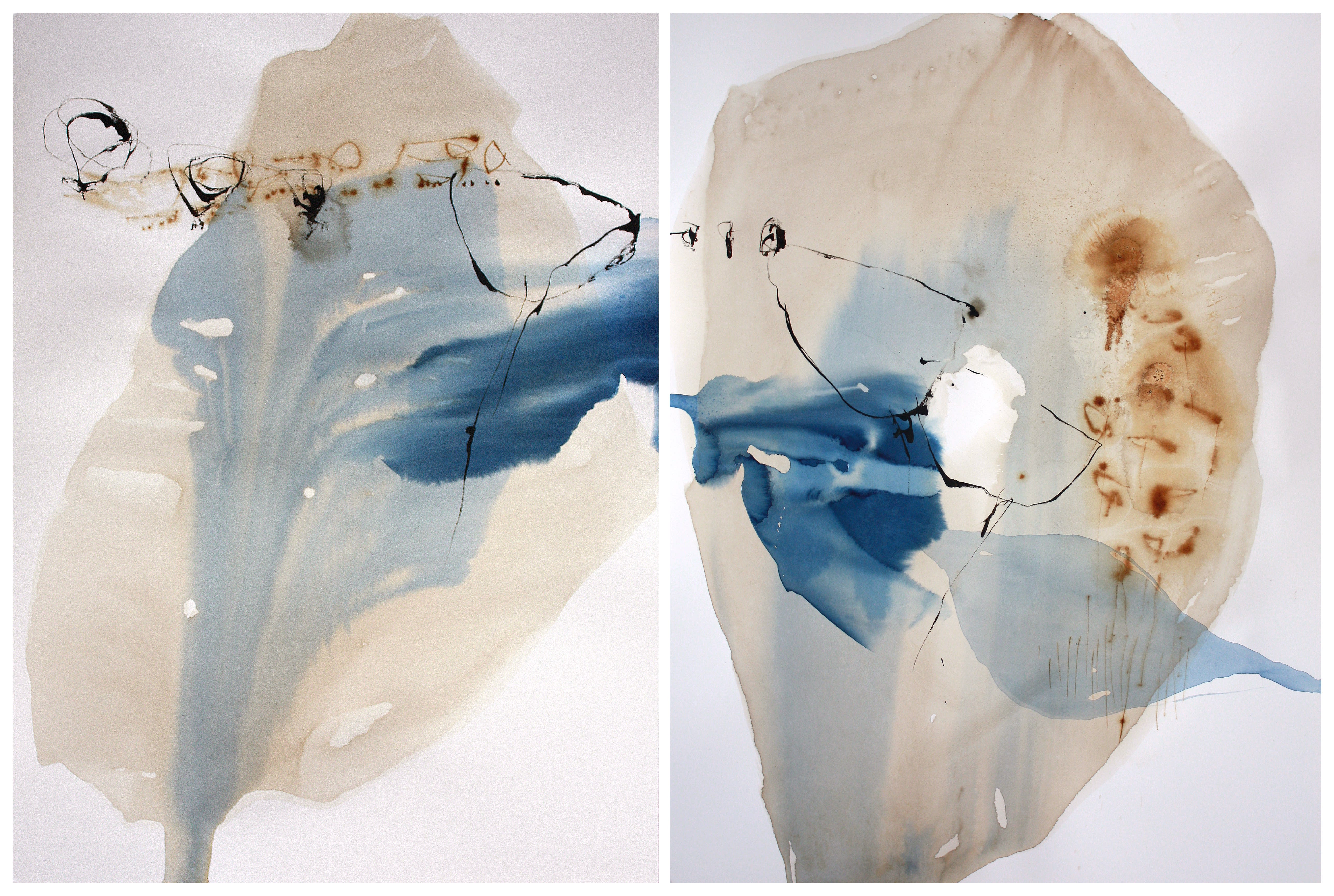
VOYAGE II (W-2016-3-2)
See more of Ana Zanic's work here.
